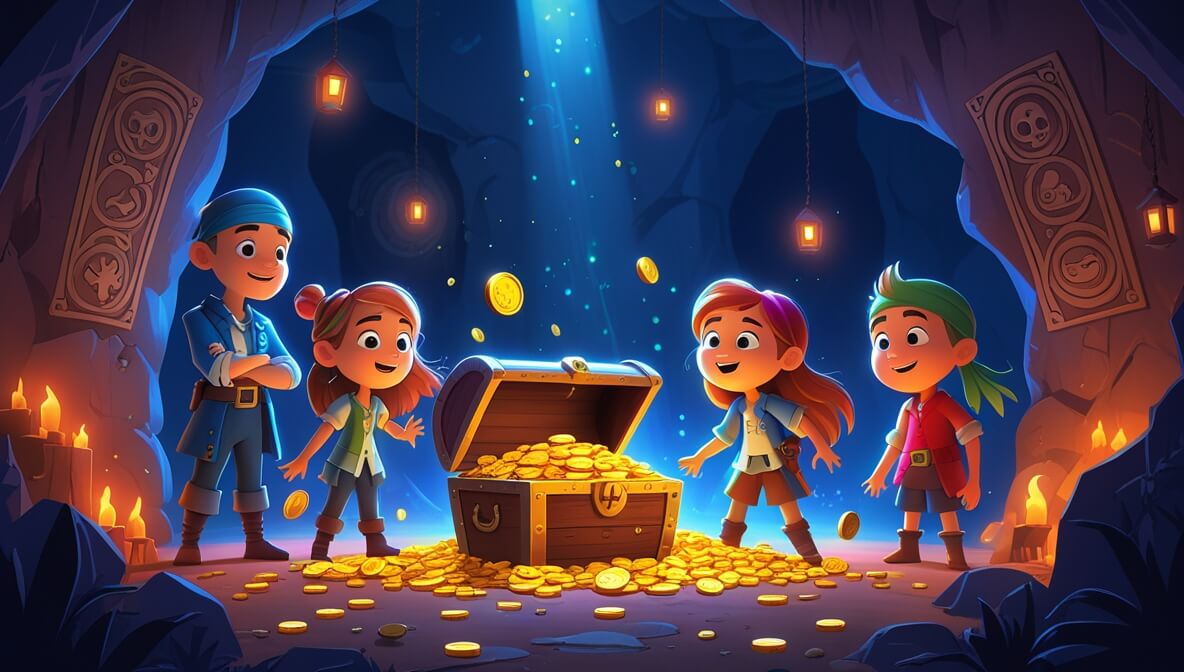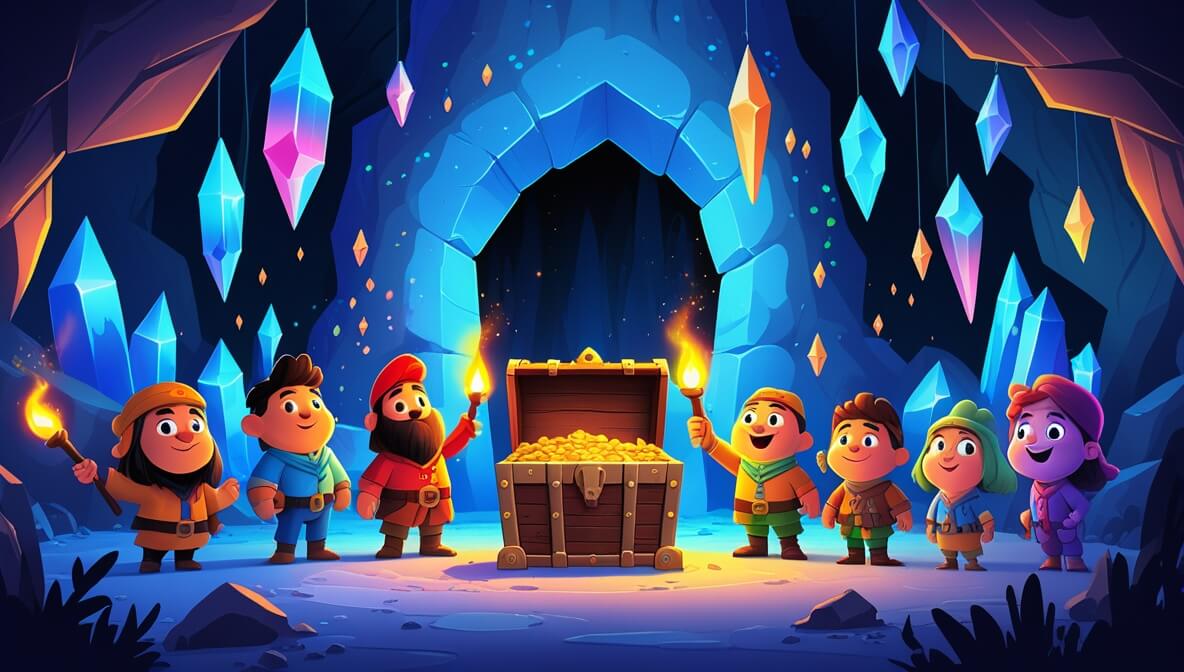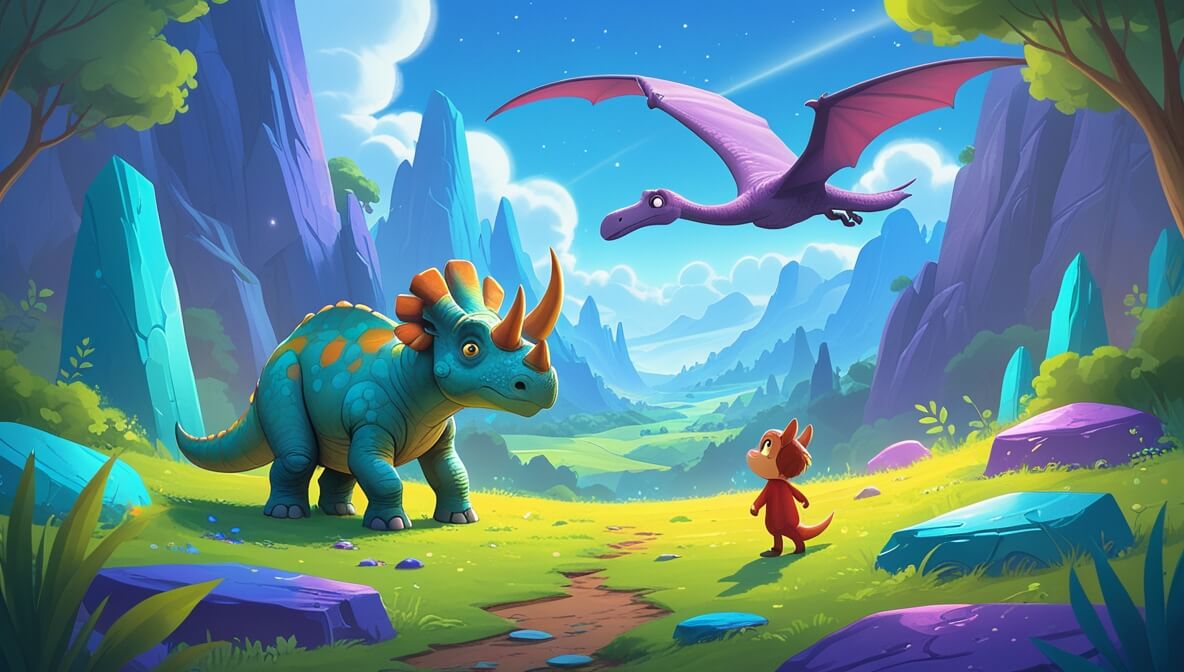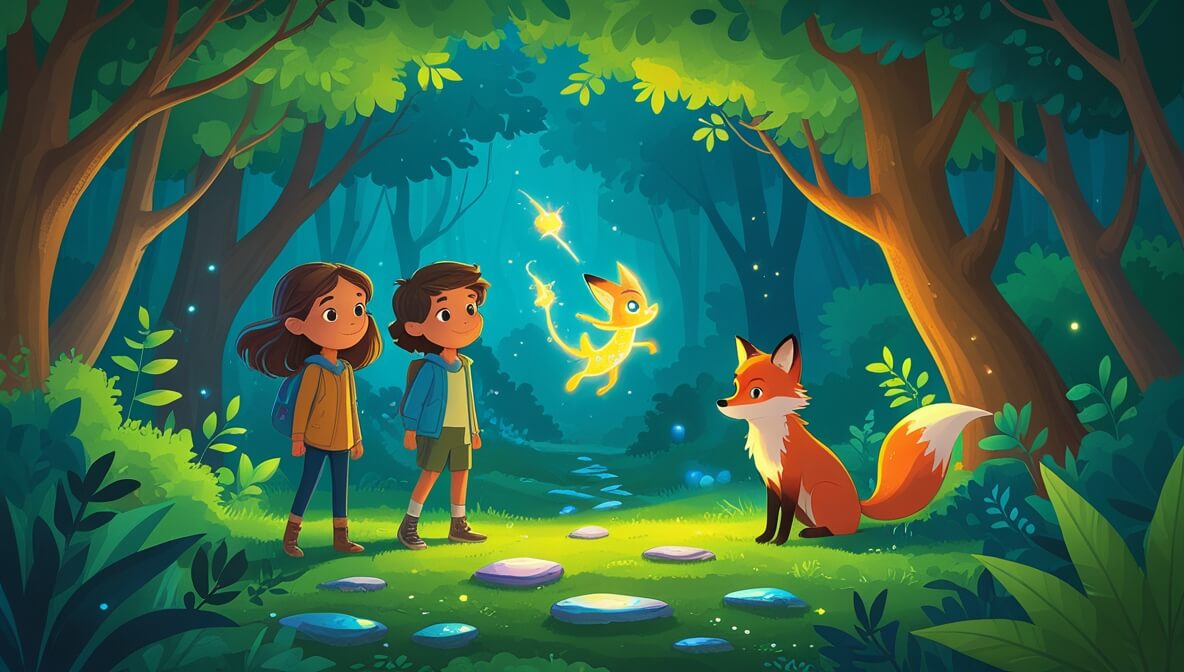Join Captain Barnacle and his loyal crew as they embark on an adventurous journey to find a legendary treasure hidden inside a mysterious cave. The path is not easy, but with bravery and teamwork, they navigate through stormy seas and unexpected challenges.
Age Recommendation
3 – 12 years
Characters
Characters:
- Captain Barnacle (a courageous and wise pirate captain)
- Misty (a clever and adventurous first mate)
- Scully (a loyal and strong sailor)
- Finn (a young and enthusiastic cabin boy)
Story
Once upon a time on the high seas, Captain Barnacle and his crew of the ship The Sea Rover were on a daring adventure. They had a map said to lead to a hidden treasure on the island of Mysteria. The legend spoke of gold so bright it could light up the darkest night, hidden deep within a mysterious cave.
Setting Sail on an Adventure
The crew gathered on deck, excitement buzzing in the air. Captain Barnacle held up the old map, its edges tattered by time. “We sail at first light!” he declared. Misty, the first mate, ensured everyone was ready, while Scully checked the cannons, and young Finn eagerly polished the ship’s wheel. With a cheer, they set sail, the ship’s sails billowing in the morning wind.
A Stormy Surprise
As the sun dipped below the horizon, dark clouds gathered. “A storm is coming!” cried Misty. The sea roared and waves crashed against The Sea Rover. Finn clung to the mast, his eyes wide with a mix of fear and thrill. Captain Barnacle shouted, “Steady, crew! Hold on tight!” Through teamwork, they managed to navigate the storm, their hearts pounding like the thunder above.
Finding the Mysterious Cave
After the storm passed, they spotted land. “There it is, Mysteria Island!” exclaimed Scully. The crew lowered the anchor and rowed ashore, the map leading them through a jungle filled with chirping birds and rustling leaves. At last, they stood before a dark cave. “This must be it,” whispered Finn, his eyes wide with wonder.
The Treasure Within
Inside the cave, the air was cool and damp. The light from Misty’s lantern danced on the walls, revealing ancient carvings of long-lost pirates. They ventured further in, until they saw it—the treasure chest, glimmering under a beam of light. “We’ve found it!” cheered Scully, as they opened the chest to reveal glittering gold coins and sparkling jewels.
Homeward Bound
With the treasure secured, they sailed back to sea. The journey home felt shorter, the crew’s spirits high with their newfound riches. Captain Barnacle smiled proudly, knowing their adventure was one for the ages. As they sailed into the sunset, Finn looked at the horizon, dreaming of the adventures still to come.
The end.
Moral of the Story
The story teaches the importance of courage and teamwork. Even when faced with challenges, working together and supporting each other can lead to amazing adventures and successes.
Questions to Think About
- What do you think is the most important quality of a good leader like Captain Barnacle?
- How did teamwork help the crew during the storm?
- Why is it important to be brave when facing new challenges?
- What was Finn’s contribution to the journey?
- If you could go on any adventure, what would it be?
Do You Know
- Did you know that pirates used to fly different flags to scare their enemies? The “Jolly Roger” was the most famous one, with a skull and crossbones.
- The golden age of piracy was between 1650 and 1720, when pirates were most active.
Word Explorer
- Treasure: Valuable items like gold, jewels, and precious artifacts.
- First mate: The second-in-command on a ship, helping the captain manage the crew.
- Cannon: A large gun used on ships to defend against enemy attacks.
Emotions in the Story
- Excitement: Felt when the crew first set sail, eager for adventure.
- Fear: Experienced during the storm when the sea was wild and unpredictable.
- Joy: When the crew discovered the treasure inside the mysterious cave.
Color Your Scene
Imagine the moment when the crew first opens the treasure chest inside the cave. Picture the bright gold coins and colorful jewels sparkling under the lantern light. Draw this scene with shades of gold, deep cave shadows, and the excited faces of the crew.
Parents’ Corner
This story is a great way to talk to your child about:
Courage: Discuss how the crew needed courage to face the storm and enter the mysterious cave.
Teamwork: Highlight how each crew member’s unique skills helped overcome the challenges they faced.
Adventure: Encourage your child to think about their own adventures, fostering creativity and imagination.
Facing fears: Talk about how the crew worked together to overcome fear during the storm, and relate it to facing fears in everyday life.











